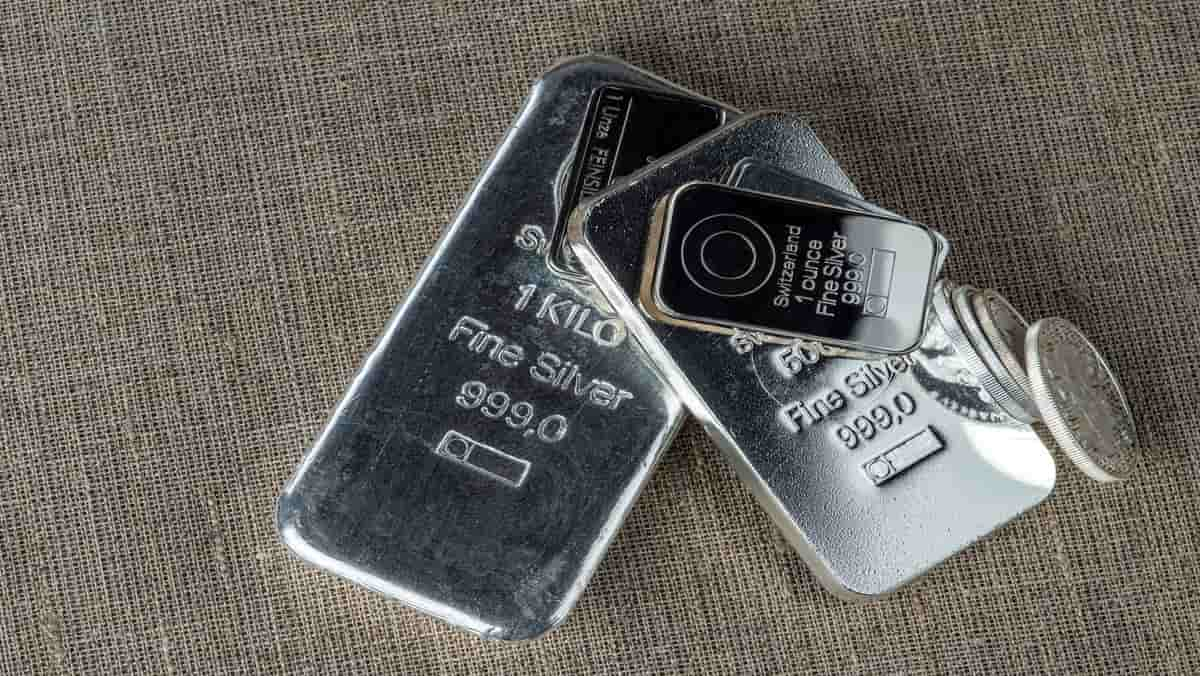
월요일 Feb 17 2025 09:13

6 분

Silver rate forecast: Silver, often regarded as both a precious metal and an industrial commodity, has captured the attention of investors and analysts alike.
As we look toward 2025, several factors will influence the silver market, including economic conditions, industrial demand, investment trends, and global geopolitical dynamics. This analysis will explore these elements to provide insights into what silver might be worth in the coming years.
Silver has long been prized for its aesthetic and functional properties. Unlike gold, which is predominantly viewed as a store of value, silver serves a dual purpose: it is a valuable investment asset and a critical component in various industrial applications. This dual nature contributes to its price volatility and susceptibility to market fluctuations.
Economic Conditions
Inflation and Currency Strength: Silver is often viewed as a hedge against inflation. As central banks continue to implement expansive monetary policies, the potential for inflation could drive investors toward silver. A weakening US dollar typically results in higher silver prices, as commodities priced in dollars become cheaper for foreign buyers.
Global Economic Growth: Economic expansion increases industrial demand for silver, particularly in sectors like electronics, solar energy, and automotive manufacturing. A robust global economy could bolster silver prices, while economic downturns may suppress demand.
Industrial Demand
Technology and Renewable Energy: Silver is an essential component in various technologies, including photovoltaic cells for solar panels, electronics, and batteries. The shift toward renewable energy and electric vehicles is expected to enhance silver demand significantly. As governments worldwide push for greener technologies, the industrial demand for silver could see substantial growth.
Jewelry and Silverware: The jewelry sector remains a significant driver of silver demand. Cultural trends and economic conditions in major markets such as India and China will continue to influence the jewelry market, impacting silver prices.
Investment Trends
Market Sentiment: Investor sentiment plays a critical role in silver prices. In times of uncertainty, silver often serves as a safe-haven asset, similar to gold. Economic instability, geopolitical tensions, or financial crises can lead to increased demand for silver as a protective investment.
Exchange-Traded Funds (ETFs): The growth of silver-backed ETFs has made it easier for investors to gain exposure to silver without physically holding the metal. Increased investment in these funds can drive up silver prices, particularly during bullish market conditions.
Tensions and Conflicts: Geopolitical instability often leads to increased demand for precious metals. Any escalation in tensions—whether from economic sanctions, military conflicts, or trade disputes—can result in heightened interest in silver as a safe haven.
Regulatory Changes: Policies affecting mining operations, trade tariffs, and environmental regulations can impact silver supply and demand dynamics. Changes in regulations in major silver-producing countries can lead to fluctuations in prices.
Supply Dynamics
Mining Production: Silver mining is subject to various challenges, including operational costs, labor disputes, and environmental regulations. Any disruptions in supply can lead to price increases if demand remains strong. Additionally, the discovery of new silver deposits and advancements in mining technology can influence long-term supply.
Recycling: A notable portion of silver supply comes from recycled materials. The efficiency of recycling processes and the market price of silver will impact the volume of recycled silver available.
While forecasting the exact price of silver in 2025 is challenging due to the numerous variables at play, several scenarios can be considered based on current trends and historical data.
Bullish Scenario: If global economic growth continues, coupled with rising industrial demand from clean energy technologies and electronics, silver prices could see a substantial increase. In this scenario, silver could potentially reach between $30 and $40 per ounce by 2025, driven by both investment and industrial demand.
Base Case Scenario: Assuming moderate economic growth and a stable investment environment, silver might trade in a range of $22 to $30 per ounce. This scenario accounts for consistent industrial demand, a balanced investment outlook, and stable geopolitical conditions.
Bearish Scenario: In the event of a global economic slowdown, reduced industrial demand, or a strengthening US dollar, silver prices could decline. In this case, silver could fall to around $18 to $22 per ounce, particularly if inflationary pressures subside and investor interest shifts away from precious metals.
The future value of silver in 2025 will be shaped by a complex interplay of economic conditions, industrial demand, investment trends, geopolitical factors, and supply dynamics. While it is impossible to predict exact prices, a careful analysis of these factors suggests that silver could see significant price movements in the coming years.
Investors should remain vigilant and consider diversifying their portfolios to include silver, particularly as the world transitions toward greener technologies and faces ongoing economic uncertainties. By staying informed about market trends, economic indicators, and geopolitical developments, investors can better position themselves to navigate the evolving silver market.
In summary, silver is likely to remain a valuable asset, with its price influenced by a multitude of factors. Whether through bullish, base, or bearish scenarios, understanding these dynamics will be crucial for anyone looking to invest in silver over the next few years.
When considering shares, indices, forex (foreign exchange) and commodities for trading and price predictions, remember that trading CFDs involves a significant degree of risk and could result in capital loss.
Past performance is not indicative of any future results. This information is provided for informative purposes only and should not be construed to be investment advice.
